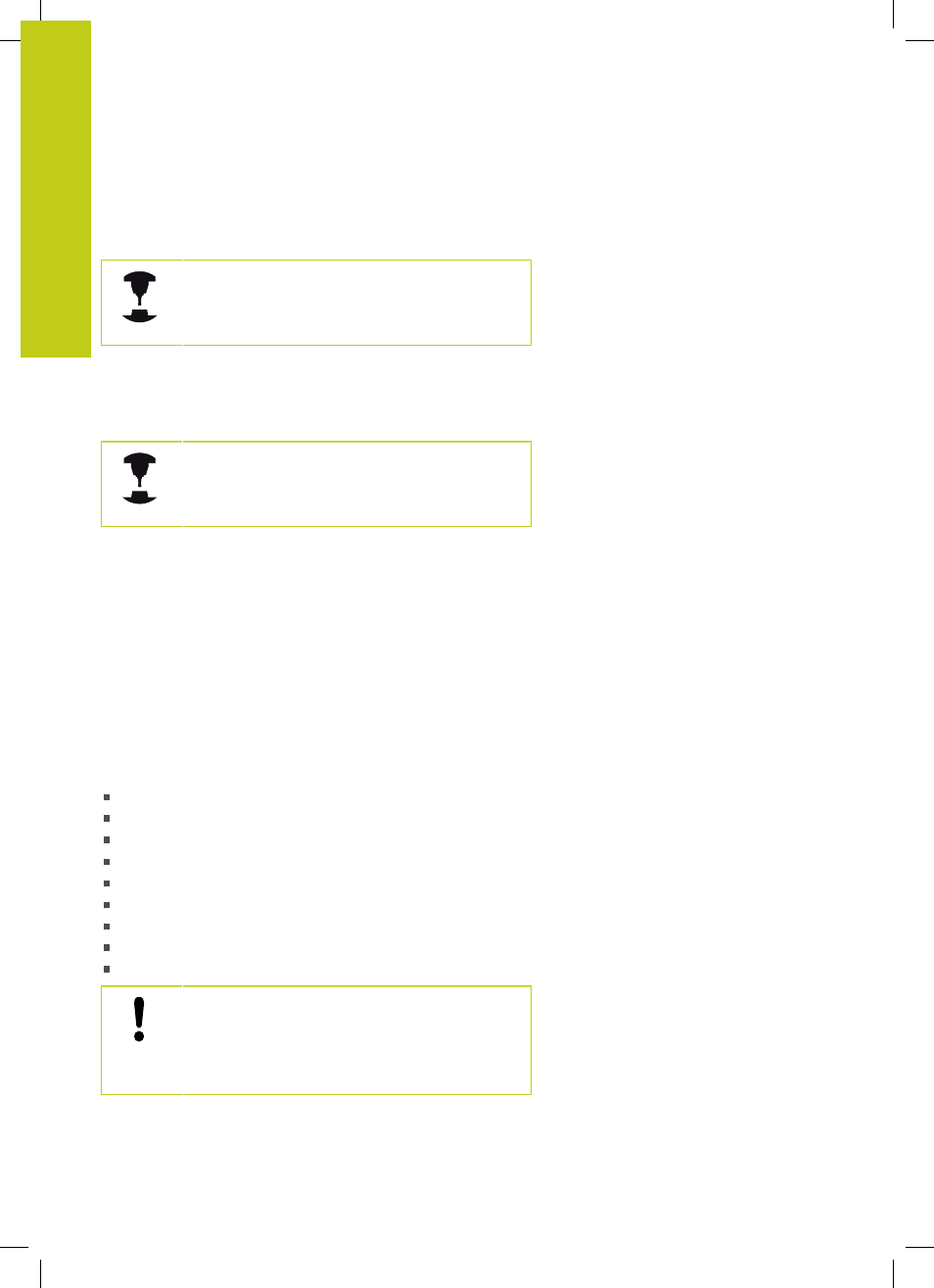Tool change, Programming: tools 5.2 tool data – HEIDENHAIN TNC 620 (81760x-02) ISO programming User Manual
Page 182

Programming: Tools
5.2
Tool data
5
182
TNC 620 | User's ManualDIN/ISO Programming | 2/2015
Tool change
Automatic tool change
The tool change function can vary depending on
the individual machine tool. Refer to your machine
manual.
If your machine tool has automatic tool changing capability, the
program run is not interrupted. When the TNC reaches a
T it
replaces the inserted tool by another from the tool magazine.
Automatic tool change if the tool life expires: M101
The function of
M101 can vary depending on the
individual machine tool. Refer to your machine
manual.
When the specified tool life has expired, the TNC can automatically
insert a replacement tool and continue machining with it. Activate
the miscellaneous function
M101 for this. M101 is reset with
M102.
Enter the respective tool life after which machining is to be
continued with a replacement tool in the
TIME2 column of the tool
table. In the
CUR_TIME column the TNC enters the current tool life.
If the current tool life is higher than the value entered in the
TIME2
column, a replacement tool will be inserted at the next possible
point in the program no later than one minute after expiration of
the tool life. The change is made only after the NC block has been
completed.
The TNC performs the automatic tool change at a suitable point in
the program. The automatic tool change is not performed:
During execution of machining cycles
While radius compensation (
G41/G42) is active
Directly after an approach function
APPR
Directly before a departure function
DEP
Directly before and after
G24 and G25
During execution of macros
During execution of a tool change
Directly after a
T block or G99
During execution of SL cycles
Caution: Danger to the workpiece and tool!
Switch off the automatic tool change with
M102 if
you are working with special tools (e.g. side mill
cutter) because the TNC at first always moves the
tool away from the workpiece in tool axis direction.